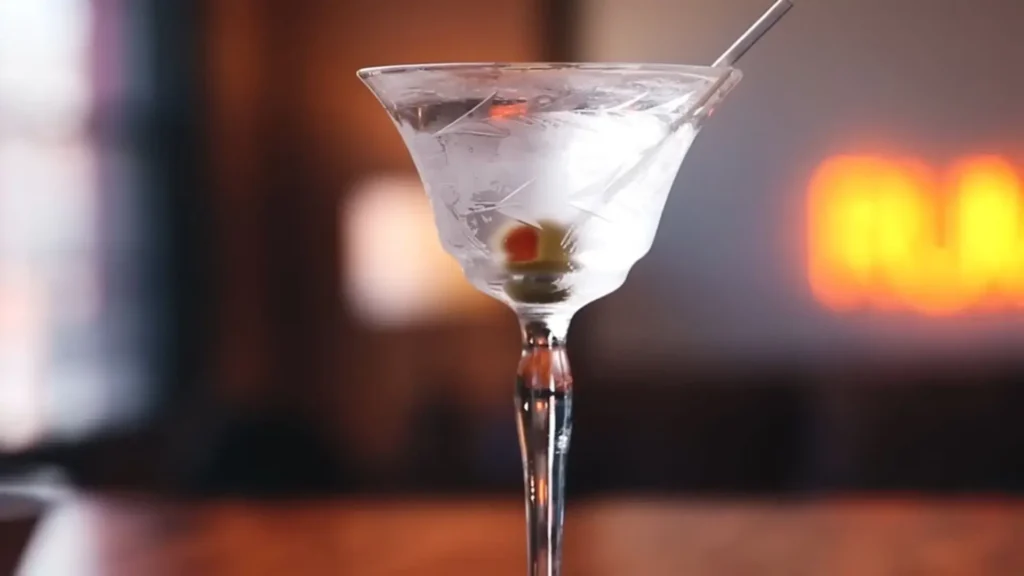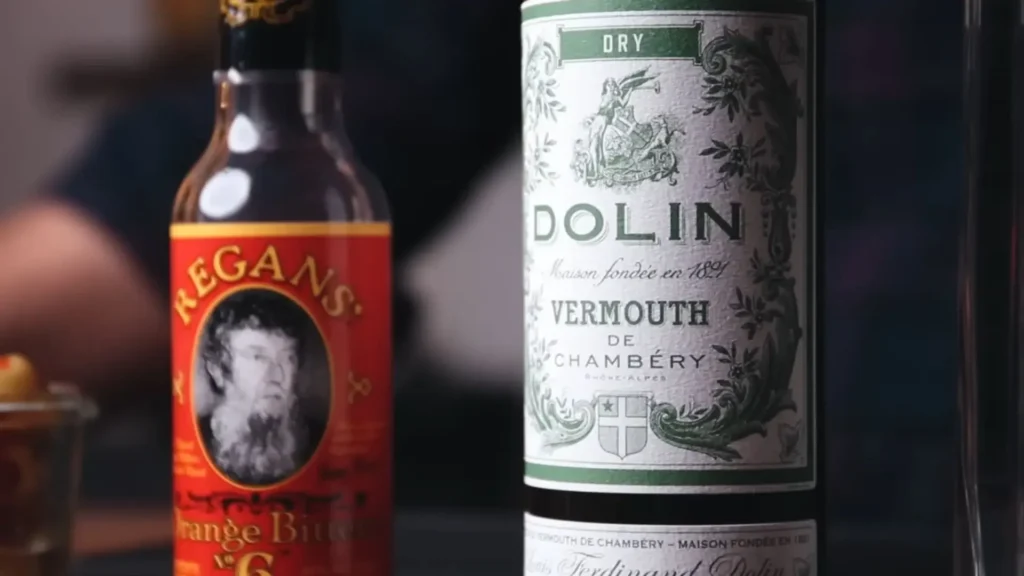The gin martini is one of the most iconic cocktails in history, representing sophistication, refinement, and ageless elegance. While countless “martinis” have been created throughout the years, there is only one authentic martini, and few drinks can match this basic yet complicated recipe. Whether you’re an experienced cocktail drinker or a newbie, learning the art of the perfect gin martini is a must-have talent that will enrich any home bar experience.
A Brief History of the Martini

The Origins Debate
Where did the cocktail originate? The martini’s origins are traced back to the 1860s with a cocktail known as a Martinez, which had gin, sweet vermouth, bitters, and maraschino liqueur. However, the genuine pioneer is mostly unknown—akin to asking “who created the first airplane,” as cocktail author Barnaby Conrad once observed.
Early martini ratios were commonly 1:1 gin to vermouth, but they have changed drastically over time. By the mid-twentieth century, ratios had risen to as high as 100:1, indicating shifting tastes and cocktail culture. The martini became synonymous with refinement during the Mad Men period, when “martinis were what Mom and Dad drank before a dinner of meatloaf, garden salad, and creamed corn.”
The Great Stirred vs. Shaken Debate
Why Stirring Wins
According to a former bartender, “shaking the cocktail equally dilutes it, resulting in a flawlessly balanced martini that packs a punch.” If you shake it, the martini will taste watered down since you’re breaking the ice.”
The science behind it is fascinating. Stirring gently chills the drink while adding the ideal amount of water through melting ice, resulting in a silky-smooth texture. Shaking, on the other hand, aerates the drink and causes excessive dilution, muddying the subtle botanical tastes of excellent gin.
Professional Consensus
Most skilled bartenders feel that spirit-forward cocktails, such as the martini, should be stirred, but drinks with additional mixers or complicated ingredients benefit from shaking. This is not just tradition; it is chemistry. The gentle agitation of stirring maintains the drink’s clarity and delicate flavor profile, whereas shaking produces small ice crystals that cloud the look and change the texture.
Crafting the Perfect Gin Martini: A Step-by-Step Guide
Recipe Details
Serving Size: 1 cocktail
Prep Time: 5 minutes
Cook Time: 0 minutes
Calories per serving: 183
Cuisine: American
Course: Cocktail
Difficulty Level: Easy
Essential Ingredients
- 2 ½ ounces premium gin (chilled)
- ½ ounce dry vermouth (chilled)
- Optional: 1 dash orange bitters
- Garnish: Lemon twist or 1-3 olives
The Perfect Preparation
- Chill your glass – Fill your martini glass with ice water while you prepare the cocktail. This crucial step ensures your drink stays colder longer.
- Prepare your mixing vessel – Fill a mixing glass three-quarters full with high-quality ice cubes (not crushed ice).
- Combine ingredients – Add the chilled gin and vermouth to the mixing glass.
- Stir with precision – Using a long-handled cocktail spoon, stir gently but firmly for 25-30 seconds. You’re looking for the mixing glass to frost over, indicating proper chilling.
- Strain with care – Discard the ice water from your martini glass, then strain the cocktail through a fine mesh strainer into the chilled glass.
- Garnish thoughtfully – Express the oils from a lemon twist over the drink, then drop it in, or add your preferred olive garnish.
Beyond the Basics: Advanced Martini Techniques
Temperature Control Secrets
The key to a genuinely outstanding martini is temperature control. Contrary to common opinion, you should never freeze your alcohol—the ice used while stirring not only chills the liquid efficiently, but also infuses it with just the right amount of water to cool the alcohol burn. Water is an essential component of a well made martini.
Vermouth Matters More Than You Think
Many modern drinkers have fallen into the trap of the “bone dry” martini (basically cooled gin), but vermouth is what turns spirits into cocktails. High-quality dry vermouth, such as La Quintinye Vermouth Royal, enriches rather than masks the botanicals in gin. Remember that vermouth is a fortified wine with a short shelf life; replace it every three months for best flavor.
The Art of Customization
Your perfect martini is deeply personal. Consider these variations:
- The Classic Dry Martini: 3:1 gin to vermouth ratio
- The Perfect Martini: Equal parts dry and sweet vermouth
- The Gibson: Same as classic but with cocktail onions
- The Dirty Martini: Add a splash of olive brine for savory complexity
Seasonal Martini Variations
Summer Refreshment
During the warmer months, consider adding light citrus ingredients. A dash of fresh grapefruit zest added to your martini produces a pleasant twist that pairs well with light summer cuisine. Pair your martini with a non-alcoholic Virgin Piña Colada for a truly tropical experience.
Winter Warmers
In colder months, experiment with barrel-aged orange bitters which add warmth and complexity. The citrus notes complement hearty winter dishes like our Lipton Meatloaf Recipe, creating a sophisticated dinner pairing.
Food Pairing Perfection
The gin martini’s clean, bracing profile makes it an exceptional food companion. Its botanical notes complement:
- Seafood: Especially oysters, shrimp cocktail, and ceviche
- Cheese: Aged gouda, manchego, or a sharp cheddar
- Appetizers: Prosciutto-wrapped melon, stuffed mushrooms
- Main courses: Herb-crusted chicken or our Big Mac Salad
For brunch occasions, pair your martini with our Cranberry Cream Cheese Breakfast Sandwich with Nordic Twist for an elevated morning experience.
Common Martini Myths Debunked

Myth #1: “The drier the martini, the more sophisticated”
Reality: Vermouth is required—it’s what distinguishes this cocktail from a simple chilled gin. Quality vermouth complements, not replaces, the botanicals in gin.
Myth #2: “James Bond was right to order it shaken”
Reality: Shaking aerates and dilutes the drink, obscuring the delicate botanical flavors. Stirring maintains clarity and texture.
Myth #3: “Any gin will do”
Reality: With only two main ingredients, the quality of your gin is crucial. London Dry gins such as Beefeater, Tanqueray, and Bombay Sapphire have the classic profile associated with traditional martinis.
Troubleshooting Your Martini
Problem: Too Strong/Alcohol-Forward
Solution: Increase stirring time by 5-10 seconds to introduce more dilution, or slightly increase vermouth ratio.
Problem: Too Weak/Watery
Solution: Use larger ice cubes that melt slower, or reduce stirring time by 5 seconds.
Problem: Cloudy Appearance
Solution: Ensure your gin and vermouth are properly chilled before mixing—temperature shock causes cloudiness.
The Martini in Modern Culture
Today’s cocktail revival has reignited interest in the traditional martini. Modern bartenders are rediscovering pre-Prohibition ratios while adding unique twists. Because of its versatility, the martini serves as a blank canvas for creativity, whether you’re enjoying a conventional recipe or experimenting with new twists.
For those seeking non-alcoholic alternatives, our Virgin Piña Colada Guide offers sophisticated options that maintain the elegance of cocktail culture without alcohol.
Sustainability in Martini Making
As cocktail culture evolves, sustainability becomes increasingly important. Consider these eco-friendly approaches:
- Choose sustainable gins: Many craft distillers now prioritize sustainable practices
- Reduce waste: Use citrus peels for garnish in multiple drinks
- Local options: Support regional distilleries to reduce transportation emissions
- Quality over quantity: A properly made martini satisfies with smaller portions
Conclusion: Your Perfect Martini Awaits
The gin martini is more than simply a cocktail; it’s a ritual, a statement, and an homage to cocktail history. You can create your own martini by learning its nuances and respecting its traditions, as well as embracing personal preferences.
Remember Dorothy Parker’s wise words: “I prefer to drink Martinis, but only two at most. Three, I’m under the table; four, I’m under the host.” Approach this classic drink with respect, relish its complexity, and enjoy the journey of finding your ideal version.
Whether you’re hosting an upscale dinner party or simply treating yourself after a long day, the gin martini remains the quintessential icon of sophisticated drinking, demonstrating that sometimes less is more.
Gin Martini FAQ
To make a proper gin martini:
- Chill your martini glass with ice water
- Fill a mixing glass with high-quality ice cubes
- Add 2½ oz premium gin and ½ oz dry vermouth
- Stir gently but firmly for 25-30 seconds
- Strain into the chilled glass
- Garnish with a lemon twist or olive
Key points: Always stir (never shake) for a smooth texture, and ensure all ingredients are properly chilled.
Stirring is superior for martinis because:
- Preserves clarity: Stirring doesn’t introduce air bubbles that cloud the drink
- Controls dilution: Gentle stirring adds optimal water content for perfect balance
- Maintains texture: Creates a silky-smooth mouthfeel without over-dilution
- Preserves botanicals: Prevents mudding of delicate gin flavors
Shaking introduces too much air and can overpower the subtle botanical notes that make a martini special.
For the perfect martini, choose:
- London Dry Gins: Classic choices include Beefeater, Tanqueray, and Bombay Sapphire
- Quality over quantity: Since there are only two main ingredients, gin quality matters significantly
- Flavor profiles: Look for gins with juniper-forward profiles and balanced botanicals
Avoid low-quality gins as they’ll dominate the drink and mask the elegant botanical complexity that makes martinis special.
Traditional martini garnishes:
- Classic: A lemon twist (express the oils over the drink first)
- Alternative: 1-3 green olives on a toothpick
- Specialty: Cocktail onions for a Gibson martini
Pro tip: For a lemon twist, always express the oils over the drink before dropping it in to release maximum aroma.
The key differences:
Dry Martini:
- Classic recipe with gin and dry vermouth
- Minimal vermouth (typically 1 part vermouth to 5 parts gin)
- Clean, crisp taste
Dirty Martini:
- Same base recipe but with olive brine added
- Creates a savory, salty complexity
- Popular variation with enhanced flavor profile
Both are valid interpretations of the classic martini with different taste experiences.
Cloudiness usually results from:
- Temperature shock: Ensure all ingredients are properly chilled before mixing
- Improper stirring: Stir too vigorously or for too long can cause cloudiness
- Ice quality: Use large ice cubes that melt slowly rather than crushed ice
Best practice: Chill all ingredients thoroughly, use high-quality ice, and stir gently for exactly 25-30 seconds.
Summer Variations:
- Add fresh grapefruit zest for citrus brightness
- Use lighter botanical gins
- Consider a mint garnish for freshness
Winter Variations:
- Add barrel-aged orange bitters for warmth
- Use richer, more complex gins
- Consider warming spices like cinnamon or cardamom
These seasonal adjustments maintain the martini’s elegance while adapting to changing weather and preferences.

1 thought on “Gin Martini Recipe”